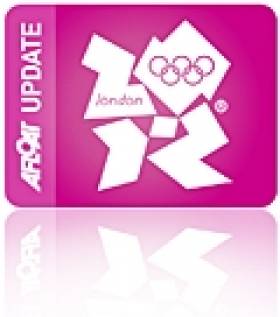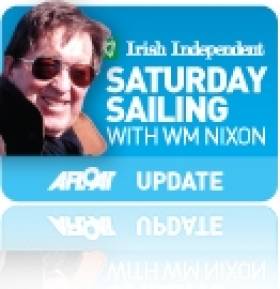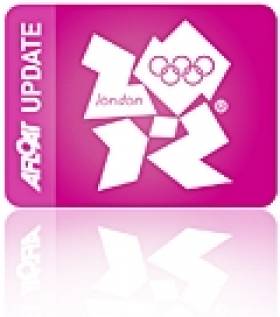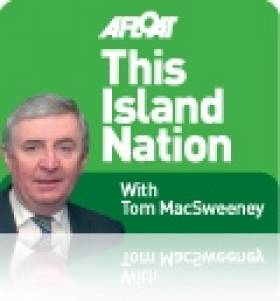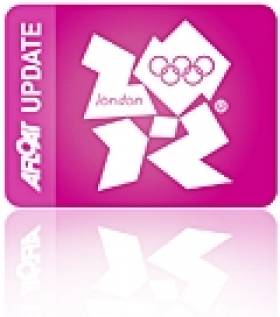Displaying items by tag: olympics 2012
Andrew 'Bart' Simpson MBE, 17 December 1976 to 9 May 2013. (17 December 1976 to 9 May 2013). 2008 Olympic Gold Medal, 2010 Star World Champion and 2012 Olympic Silver Medal. My foster son could not believe that I knew 'Bart' Simpson, when he eventually met the larger than life character that Bart was Jason received nothing but kindness and friendship.
On my 40th birthday in 2012 nothing but the finest vintage Dorset cider was good enough for us.
I do not remember when I met Bart but will never forget the enjoyment I had in his company and the pain that he put me through whilst helping him prepare for the 2012 Olympics.
In December 2012 I received a call from Bart to help prepare the way for me to join Team GBR as a training partner.
I was out of practice, this did not deter them, and they took this as another challenge. The training camps moved from Cadiz to Weymouth by way of Palma and Hyeres. But the focus never shifted. Along with Iain Percy they formed the most formidable partnership I have ever seen, nothing was beyond them. They forged a team including John Gimson, myself, Nick Harrison (coach), Simon Rosier (boat guru), Al Newton (boat builder) , Richard Clarke and Tyler Bjorn (Canadian Star Team) and a group of technical boffins too numerous to mention.
In 2003 Iain Percy invited Max Treacy and I to train with him in Cadiz, when Iain then teamed up with his child hood friend Andrew 'Bart' Simpson in 2006 we enjoyed an insight into their preparation methods and determination to win which was definitely a decisive factor for us in Miami in the 2008 World Championships when we qualified Ireland for the 2008 Olympics.
I watched with pride when they received their Medals in both 2008 and 2012, this was proof that nice guys do win. His MBE was recognition of his massive contribution to sailing and just deserts for "the Greatest of Britons".
Bart's interests outside of sailing, varied from Tottenham Hotspur Football Club through Economics to a love of high design furniture where he was hoping to make his mark with the fusion of Carbon and Wood.
Bart's wife Leah provided him with his greatest joy, his two great children. They had the greatest father and the most loving parent any child could ever want for.
Anthony Shanks, friend
Durrow, Laois, Ireland
Olympic Race Officer Jack Roy To Give Talk at Howth YC
#HYC - Next week Howth Yacht Club will host international race officer Jack Roy of the National Yacht Club, who will give an illustrated talk on his experiences in Weymouth at the London Olympics last summer.
Roy was selected by the ISAF as a technical officer, one of only seven race officers selected to supervise the UK race management teams at the Olympics.
He was also the only one of the seven who rotated through all the courses, and his talk gives a fascinating insight on how the Olympic regatta was managed.
Roy's talk takes place at the HYC on Wednesday 13 March at 8pm, and will last about 75 mins with time for questions afterwards. Admission is free, but a voluntary donation to the RNLI is expected (€5 suggested).
#olympic – Annalise Murphy's achievements in London 2012 a week ago along with the performances of her team mates will be celebrated at a special homecoming event for the Irish Olympic sailors at the National Yacht Club in Dun Laoghaire tomorrow.
Annalise's Dun Laoghaire club is the venue for the 2012 sailing team reception. Although the sailing team did not deliver the much sought after medal from Weymouth it captured the attention of the nation when Olympic debutante Annalise took an explosive lead in the Laser Radial class and brought home Ireland's best Olympic sailing result in 32 years, finishing fourth.
The successful Irish Olympic team returns to Dublin tomorrow at lunchtime after a medal haul that equals that of the Melbourne Olympics in 1956. Five medals came from boxing and equestrian sports. On arrival there will be a private team reception at the airport followed by a press conference before the athletes go their separate ways.
The Irish Olympic Sailors achieved the following results: Laser Radial – Annalise Murphy 4th overall; Star – Peter O'Leary & David Burrows 10th overall ; 49er – Ryan Seaton & Matt McGovern 14th overall ; 470 – Ger Owens & Scott Flanigan 23rd overall; Laser – James Espey 36th overall.
Tomorrow's homecoming event at 5pm at the National YC is being hosted by the Irish Sailing Association (ISA). The association says it is 'an RSVP event for families and friends of the sailors and not a public event'
Read WM Nixon's post Olympic regatta column here
Barking Dogs And Spritely Centenarians
The dogs bark, but the caravan moves on. Most of us would probably have thought this was an item of pseudo philosophy which has been no nearer the sands of the desert than the beach at Tramore. But it will do for now to get the feeling of picking up the pieces and trying to focus on other things as we accept that the 2012 Sailing Olympics will not provide any sort of medal for Ireland.
It's harsh for the competitors, and agonizing for their fans. The dynamic between athletes and supporters has never been stronger, and with the event being held no further away from Dublin than West Cork, all involved could give it their best shot. Naturally we are now looking towards Rio. We were looking towards Rio before Weymouth. But the reality is that this year was the golden opportunity, in which resources could be maximized instead of being drained by the costs of campaigning on the other side of the world.
Those who would put the brightest spin on the results will tell us that the four years to Rio can be usefully employed in building on what were, by many standards, a solid set of results. Certainly there are countries much better resourced than Ireland which have been nowhere near the same placings this year. But how long can we hope to be building on good placings, instead of simply celebrating a medal or two?
At the personal level, four years is a very long time for the dedication required of Olympic hopefuls. Four long years, and out of a global population of billions, only three in each class get a medal at the end of it. You'd wonder about it. But then the athletes themselves reassert the Olympic spirit, and the show goes on.
Far indeed from the frenetic Olympics is the stately progress of the Tall Ships, and their arrival in Dublin in twelve days time will lift the mood of the sailing community. The traditional craft of the Old Gaffers Association will signal the start of the festival with a weekend gathering of ancient boats at Poolbeg Y&BC on the weekend of August 18th.
Meanwhile the renowned Ringsend boat designer and builder John B Kearney is being celebrated this week in Skerries with Mermaid Week – Skipper Kearney (1879-1967) designed the popular 17ft Mermaids 80 years ago. To mark this anniversary, Therese McHugh of Skerries, a former Mermaid Sailing Association chairman, organized the sailing of the Mermaid Thumbalina in coastal hops from the most westerly fleet at Foynes right round to Skerries.
Snippets about this remarkable voyage have appeared on Afloat.ie from time to time, and we hope to see the full account in due course. Ceratinly there has been an upsurge of interest in recent years in the work of John Breslin Kearney. He was a largely self-taught yacht designer whose day job was with Dublin Port & Docks, but in his spare time in 1911 he began building his first proper yacht, the 36ft yawl Ainmara, working in a corner of Murphy's Yard in Ringsend by the light of oil lamps, and no power.
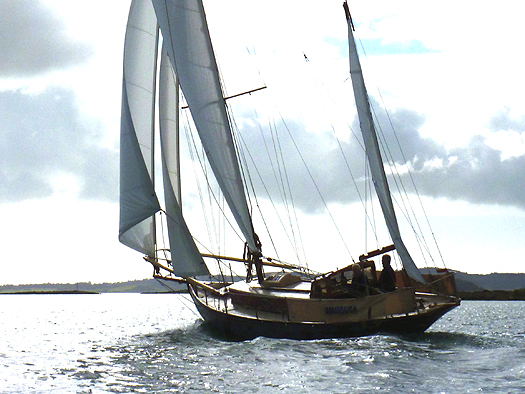
A place in the sun for Ainmara, the spritely Centenarian. Photo W M Nixon
Ainmara was launched in 1912, and since 1966 she has been owned by Dickie Gomes of Strangford Lough, who is best known for his racing skills aboard all sorts of racing machines – back in the day, he was a formidable multihull and maxi skipper, setting round Ireland records and winning the round Ireland race.
Truth be told, Ainmara languished for a while in a shed at Dickie's farm on the Ards Peninsula while he was doing his thing on the international scene. But he was determined to have her back afloat for her centenary this year, and she looks better than ever, a hundred years up and still going strong. Or at least I hope she's still going strong. By the time you read this, I'm supposed to be trundling round the Hebrides with Tiger Gomes on his spritely centenarian. He tells us she's making a drop o' tea, but that's allowed, it keeps her sweet.

For her Centenary this year, the J B Kearney designed and built Ainmara has been kitted out with a new suit of sails made by Mike Sanderson on Sketrick Island in Strangford Lough. Photo: W M Nixon
O'Leary & Burrows Finish Tenth in Final Olympic Star Race
#peteroleary – Peter O'Leary and David Burrows have produced Ireland's top Star class result at the London 2012 Olympics but it will be small consolation for the pair who won gold at the pre-Olympic regatta just six weeks ago.
O'Leary finished 10th in the medal race and 10th overall, eclipsing Mark Mansfield's 12th at the Atlanta Olympics in 1996 also crewed by David Burrows.
The regatta represented the final regatta for the 20 foot design after a 100 year stint as an Olympic class bringing an end the mens keelboat category.
The Cork-Dublin pair were 9th overall beginning the medal race this afternoon but due to their points on the leader board, they were not in contention for a medal.
Sweden's Fredrik Loof and Max Salminen won the Star Medal Race to upset the favourites and take the gold medal.
Having trailed overnight leaders Iain Percy and Andrew Simpson (GBR) by 12 points ahead of the Medal Race the Swedes won by four seconds over Hamish Pepper and Jim Turner to overcome the Brits who finished eighth.
The Brits had to finish sixth or better to guarantee gold but in a tense final run Norway's Eivind Melleby and Petter Morland Pedersen, America's Brian Fatih and Mark Mendelblatt and Brazil's Robert Scheidt and Bruno Prada finished less than two seconds ahead of the Brits squeezing them into eighth and down into silver medal position. The Brazilians subsequently fell into bronze medal position.
Final top three:
1. Fredrik Loof and Max Salminen (SWE) - 32pts
2. Iain Percy and Andrew Simpson (GBR) - 34pts
3. Robert Scheidt and Bruno Prada (BRA) - 40pts
The ISA's James O'Callaghan said "While it is the best result Ireland have achieved in the Star class it is still disappointing. We came here hoping to be fighting for a medal. That plan has not worked out in a way we could have foreseen".
Valentia Radio, Coastguard Equipment & Poor Olympic Coverage
Another attempt is being made by Coast Guard management in Dublin to close the coastal radio stations at Valentia and Malin Head and centralise operations in Dublin. That, the poor quality of television coverage of sailing at the Olympics, the future of the State's national fishing board and the launch of the national maritime plan, are amongst my topics on this week's THIS ISLAND NATION.
RESPECT FOR VALENTIA RADIO
Sailing the West Cork coastline last week Valentia Radio was a welcome companion. I listened to their regular sea area weather forecasts on VHF. They also provide the added service of message 'traffic' for vessels at sea, and advisory warnings about hazards, amongst their service. In addition to VHF Medium Frequency transmission covers a wider maritime area. The voices of the station staff become a familiar and welcome part of one's voyaging. You know they are there, a source of help and support if needed. During the week I heard them involved in search and rescue work, using their local knowledge.
On the North-Western coastline they are partnered by Malin Head Radio, providing a similar service. The staff of both have that vital component not available anywhere else, of local knowledge of their sea areas. The central base is in Dublin where staff can concentrate on the East Coast.
The service works well but high-level Coast Guard officials have been attempting for several years to centralise operations in Dublin and close Valentia and Malin. Previous attempts to do this were defeated when Coast Guard Management proposals were shown not to be in the best public interest.
I feel a sense of anger and annoyance that another attempt is being made to target the stations, emanating from the Department of Transport where a reliable source has given me details of a study on which Minister Leo Varadkar has told officials to prepare proposals which will propose what are termed 'hard decisions' before the Cabinet in October. It appears to me that Coast Guard management want one station, in Dublin, to control all output and, I am told, have repeatedly sought the adjustment of consultant reports to achieve this end. It could be done technically, but would exclude the vital aspect of local sea area knowledge which, in both Valentia and Malin has several times saved lives. It is an approach to safety which is not acceptable, with which there should be no compromise. When then Minister Noel Dempsey attempted to close the helicopter base at Waterford I raised the question – what is the value of one life? I do so again now.
NEW STATION EQUIPMENT
New equipment assigned to upgrade Valentia after the last controversy in 2009 is only due to be installed this month or next, a wait of three years!
New equipment is also being installed at present in Malin. One of the proposals by Coast Guard officials is that if a second station is needed to back-up and support the Dublin central base in case of any fault developing there and threatening a blacking-out coastal communications it should be in Blanchardstown, which just happens to be the Minister's constituency!
A new engine room, new boiler room, new security system, new generator, new operations room, an upgraded transmitter room and a helipad are due for installation in Valentia, so where is the justification for now considering closure – and at a time when other general Coast Guard stations, not radio stations, are and have been built around the country at considerable expense? Where is the logic in this?
THIRD LARGEST COASTAL STATION
Valentia is the third largest coastal marine station in Ireland and the UK. It covers the most turbulent seas in Western Europe and the roughest inland terrain in the country, where it also helps with search and rescue and deals with two-thirds of all 'Mayday' emergency calls around the coast of Ireland.
The station employs 16 people.
At present the Departmental-Coast Guard budget is putting money into a move away from the Eircom fixed line network to an independent contracted microwave network, configured to enable the coast to be covered effectively for marine radio, search and rescue, assistance information by three stations. If this was to be changed to any other configuration, if a one-centre option is chosen in Dublin, there would be an extra cost of around €10m. I have been told. Adding the €5m. already spent on the government decision to improve Valentia and Malin, I wonder what the point of all of this is? Why is Coast Guard management opposed to the costal-based marine radio stations, at the same time as building other Coast Guard bases around the coast. There seems a lack of logic in this approach.
WHAT IS THE VALUE OF A LIFE ?
In safety-at-sea terms the present maritime coastal radio station configuration of Valentia and Malin will always be required, as long-range Medium Frequency communications will stay there, used in addition to VHF to cover wider areas of reception. So even if a one-centre manned set up was followed, with an unmanned centre duplicate in case of Dublin breakdown, there would be two additional unmanned sites at Valentia and Malin to be maintained for long-range communications with attendant costs.
Dublin operates three 8-hour watches while Malin and Valentia have operated a 12-hour shift pattern with the effective saving of 2 staff positions without the requirement for overtime.
Coast Guard officials and the Minister for Transport should back away from proposals to do anything which would reduce the effectiveness of safety at sea.
They would be well advised to do so.
THE FUTURE OF BORD IASCAIGH MHARA
The Chief Executive of the national fisheries board, Bord Iascaigh Mhara, has told me that: "If you look at where the economy is at now, the need for a standalone agency dealing with seafood development makes sense more than at any time in our economic development. The case is stronger today than it has been for many a long time."
Jason Whooley was speaking to me about suggestions that BIM should be abolished and its functions absorbed elsewhere:
"I hope and would expect the review of BIM will come to the conclusion that it is vital to the seafood sector, to the fishing industry, to maintain BIM, but equally it is up to us as an organisation to constantly review ourselves and our services and deliver for the industry. People may see us as a State agency, cushioned from the wider economy and that an organisation needs a jolt. Perhaps that keeps us on our toes, because we are looking at ourselves constantly to improve our services, so I do think BIM has a strong future."
Closing BIM would, in my view, indicate disregard for the role of the marine sphere in government. The opinions of economic consultants are too easily accepted without challenging the damage they could do to the nation's future.
NATIONAL MARINE PLAN
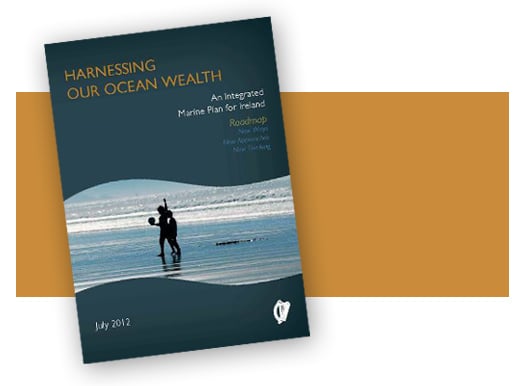
"For too long we have turned our backs on the sea. It's time now to look to our ocean as a national asset, to harness the opportunities for economic recovery. We need to treasure what we have and protect it for future generations. We also need to build on the potential of our ocean wealth and what it can give back to its people. 'Harnessing Our Ocean Wealth,' the title of this plan, puts a structure in place to make that happen".
That was the opinion expressed by Marine Minister Simon Coveney when he launched the national maritime development plan with the Taoiseach in Galway. It proposes that the value of Ireland's ocean wealth could be doubled to 2.4% of GDP and the turnover from our ocean economy be increased to more than €6.4bn by 2020.
It is a long-term outlook, but one to focus on, for seafood, fishing, marine tourism, shipping, oil and gas, renewable ocean energy and new applications for health, medicine and technology. It sets out goals to achieve a thriving maritime economy, healthy ecosystems and to increase the nation's engagement with the sea, focussing on the State creating the right conditions to promote investment and enable growth.
POOR OLYMPIC COVERAGE
I have had quite a few calls and Emails complaining about television coverage of sailing at the Olympics. It has been poor. TV coverage for the Games is provided by t Olympic Broadcast Services (OBS), an agency of the International Olympic Committee and prevents other broadcasters from covering the events. In sailing coverage has not been satisfactory and at times is done on a single camera which is not acceptable at this level of the sport. The IOC has treated sailing badly in television coverage. For a link to all the latest Irish Olympic sailing news click here.
• Email comments, opinions, information to: [email protected]
Follow more marine news and comment on Twitter: @TomMacSweeney
• And on Facebook – THIS ISLAND NATION
#olympicsailing scoring – There's no surprise that there's a lot of confusion out there about how Olympic sailing scoring works. Miriam Lord in the Irish Times this morning admits to knowing very little about the whole 'sailing lark'. Radio presenters on Newstalk are also scratching their heads. Plenty of sailors get confused too, sailing can be complex, scoring more so but here's an explanation of how the results sheet will work for Annalise Murphy and others on the Olympic sailing team.
After each race, participants are given a number of points depending on their finishing position (not time). The winner gets 1 point, the second place gets 2 points, and so on.
In Annalise's Laser Radial class there are 10 races plus a final 'medal' race.
Even though Annalise has won four races she still has more to come. As of this morning Annalise has six races left to sail. It is the reason she has been cautious in media reports about making any predictions. 'I'm just taking it one race at a time', she said yesterday. Her score sheet is here.
The reason there is 10 races spread out over six days is that it gives the biggest chance of providing the widest range of wind conditions for a true champion to emerge.
Of the 10 series races sailed by this Saturday the 41 sailors in the fleet will discard their worst result.
Then the top 10 sailors in the fleet go into a medal race (next Monday) which is for double points and this race cannot be discarded. The rest of the fleet can go home, their regatta is over.
The overall winner is the sailor with the fewest aggregate points across the fleet races and the medal race final.
The results system means that the result in the final medal race doesn’t automatically dictate where the medals will go – if the leader has built up a healthy enough lead on points (four wins for Annalise is obviously great), a sailor could still take the gold if they come second or third in the final.
Can Annalise 'Medal' Before Monday's Medal Race? Even if Annalise were to continue in current form and win all ten fleet races she can't medal before the final but if for example she gets a 19 point lead in the fleet racing all she has to do is finish the medal race even in tenth place to become Olympic champion.
Of course there are no end of other possibilities that can arise between now and Monday including the race schedule changing because of problems with wind strength for example. This could cut the number of races sailed. There are other scenarios where a sailor can receive a non discardable penalty for rule infringements. The full racing rules of sailing are here.
Annalise's Juniors Jump for Joy at National Yacht Club
#annalisemurphy – You could have heard a pin drop at the National Yacht Club in Dun Laoghaire yesterday afternoon with over 70 junior sailors aged 7 to 14 dressed in their wetsuits munching crisps and staring at a big screen in the Dun Laoghaire club house. They were glued to the Olympic sailing from Weymouth but more precisely watching their friend and coach Annalise battling big seas and winds with such skill that she has sailed into the Irish sailing history books.
Then picture the scene when their 22-year old sailing instructor crossed the line to win the fourth race. 'She's Won, She's won! The kids screamed as they poured out of the club and on to the slipway to celebrate. 'Hooray for Annalise!'
The ties between the National Yacht Club children and their sailing star are very strong. Annalise regularly trains youngsters in taking their first tack in the harbour, taking time to make them feel confident. She' s also know for her helpful advice in mentoring teens in racing techniques especially in her chosen Laser dinghy.
But for now Annalise Murphy's mind is on other matters. She is the talk of Weymouth this morning having won all four races in her Laser Radial class so far. She joins Katie Taylor as Ireland's best hope for Gold next week.
It's windy in Dun Laoghaire this morning which means the kids might not get to hone their skills afloat today but there is plenty of action on the telly! Cover your ears if you are anywhere near the NYC today. Annalise is back in action at 12 noon today.

Annalise squeezes her 6' frame into a child's dinghy to teach a pair of six year olds in Dun Laoghaire. Photos: David O'Brien
Follow Irish Olympic Sailing Action On TV Next Week
#OLYMPICS ON TV - The Irish Olympic team's campaign finally kicks off at London 2012 this weekend with action across sailing, rowing and canoe slalom events - and Afloat.ie will keep you up to date on where you can catch the action live on TV over the next seven days.
In sailing, the first week's competition begins at noon on Sunday 29 July, when Peter O'Leary and David Burrows start their Star campaign. BBC Three is the best place to find live sailing coverage throughout the afternoon and most other days.
On Monday 30 July, Annalise Murphy begins her challenge for an Olympic medal with live Laser Radial action during the afternoon on RTÉ Two, while BBC Three continues its comprehensive coverage - no doubt featuring James Espey in the Laser.
More action in the Men's Laser and Star plus the Women's Laser Radial can be found on BBC Three on Tuesday 31 July, while Wednesday 1 August sees the first competition from Matt McGovern and Ryan Seaton in the 49er (plus sailing in all over classes bar the Star).
The 470 pair of Scott Flanigan and Ger Owens will get afloat on Thursday 2 August, with coverage of their class as well as the Men's 49er and Star throughout the afternoon on BBC Three.
In other Olympic highlights, Eoin Rheinisch begins his challenge in the Men's K1 canoe slalom heats on RTE Two from 1.30pm on Sunday 29 July, while Hannah Craig will be in the spotlight in the Women's K1 heats from 2pm on Monday 30 July.
Men's K1 semi-final action on Wednedsday 1 August will be broadcast live on BBC Three, Eurosport and Sky 3D, with the K1 final - which could decide Ireland's first aquatic medal - set for 3.15pm on BBC Three.
Thursday 2 August brings the Women's K1 semi-finals on RTE Two from 2pm, with the finals scheduled from 3.55pm on BBC Three.
Meanwhile in rowing, Ireland's sole competitor Sanita Puspure starts her Women's Single Sculls campaign on Saturday morning.
RTE Two and BBC One will have coverage of the repechage from 11am on Sunday 29 July, with quarter-finals on the morning of Tuesday 31 July (RTE Two) and the classifications and semi-finals on BBC One from 11am on Thursday 2 August.
Olympic Torch Begins Five-Day Relay of Ireland
#OLYMPICS - The Olympic torch lit up the slipways of Harland and Wolff - where the Titanic was built a century ago - in Belfast this morning as the five-day relay through Ireland begins.
The torch will follow a route looping around the six counties, and also includes a whistle-stop tour of Dublin as a symbol of Anglo-Irish goodwill, according to The Irish Times.
As previously reported on Afloat.ie, Irish canoe slalom paddler Matthew Sykes will be among those carrying the torch in Dundonald later today.
"To be the first deaf person in Northern Ireland to be chosen is a real privilege and I think it will be a great experience," he told IrishCanoeSlalom.com.
The torch will come to Dublin on Wednesday 6 June, where it will visit the Olympic Council of Ireland headquarters in Howth - birthplace of the Howth Seventeen class - and be the focal point of celebrations at St Stephen's Green.
The Irish Times has more on the story HERE.


























